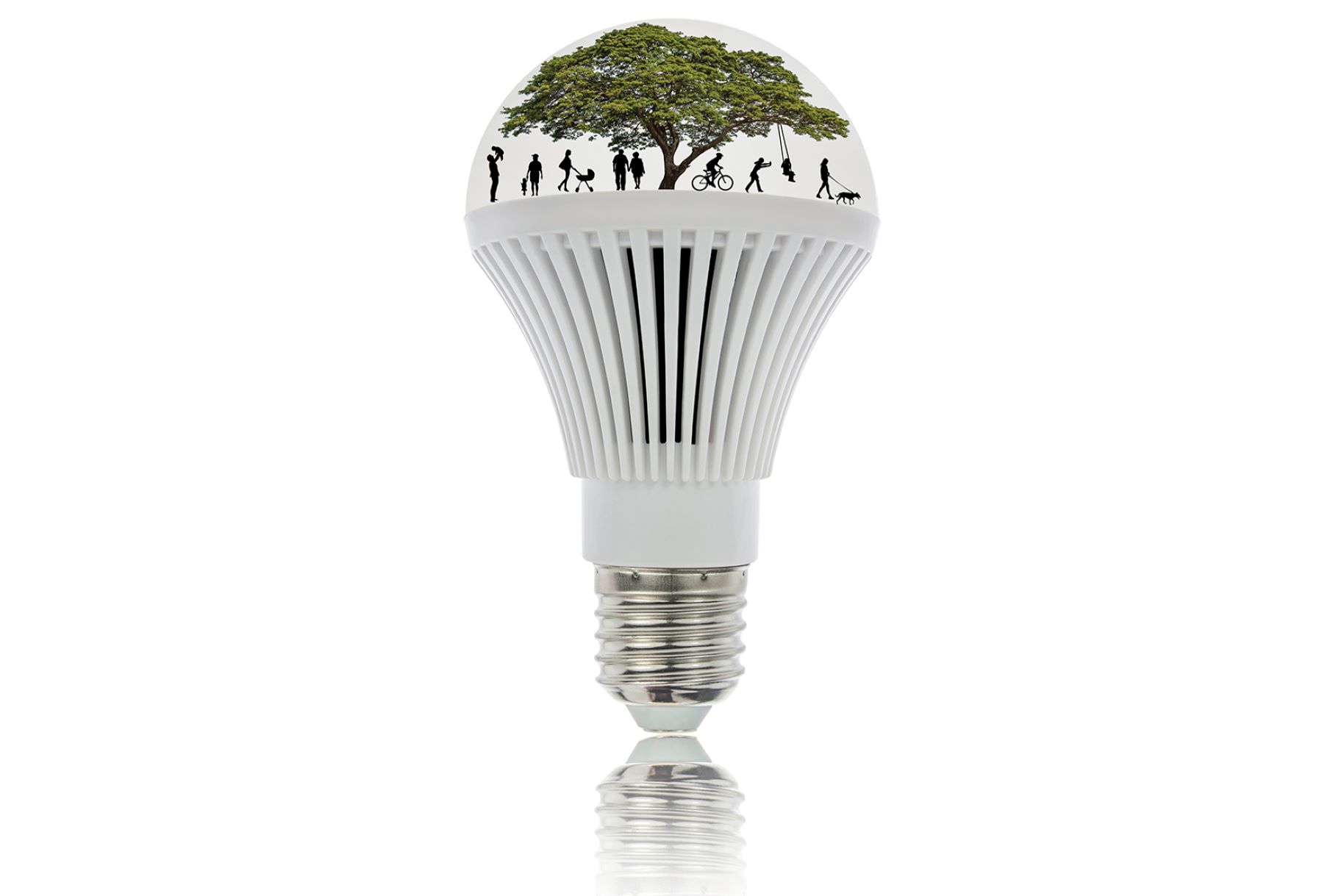
When it comes to lighting, it’s important to have accurate and reliable information to make informed decisions. That’s where DOE Lighting Facts comes in. DOE stands for the U.S. Department of Energy, and their Lighting Facts program provides essential information about lighting products to help consumers and businesses make the best choices.
In this article, we will explore 18 key facts about DOE Lighting Facts that you need to know. From understanding the labels on lighting products to the benefits of using energy-efficient lighting, we will cover the most crucial aspects of this program. Whether you are a homeowner looking to upgrade your lighting or a business owner aiming to reduce energy costs, understanding DOE Lighting Facts can empower you to make the right choices for your needs.
Key Takeaways:
- Energy-efficient lighting, such as LED and CFL bulbs, saves energy and reduces costs. It’s like using a magic wand to make your home brighter while also helping the environment.
- The DOE provides helpful resources to choose the right lighting. It’s like having a superhero guide to help you pick the best lighting for your home or business, saving energy and money.
The Energy Independence and Security Act of 2007 set guidelines for energy-efficient lighting.
As a result of this act, the Department of Energy (DOE) implemented measures to encourage the use of energy-efficient lighting technologies, promoting sustainability and reducing energy consumption.
LED lighting is highly energy-efficient.
LED (Light Emitting Diode) lighting technology consumes significantly less energy compared to traditional incandescent and fluorescent lighting sources. This helps reduce energy costs and lower greenhouse gas emissions.
CFL bulbs are a more efficient alternative to incandescent bulbs.
Compact Fluorescent Lamps (CFLs) are more energy-efficient than incandescent bulbs. They last longer and use approximately 75% less energy, making them an eco-friendly lighting option.
Energy Star certified lighting meets stringent energy efficiency requirements.
Products with the Energy Star certification label meet strict energy efficiency criteria set by the DOE. Choosing Energy Star certified lighting ensures optimal performance while reducing energy consumption.
Daylighting systems utilize natural light.
Daylighting systems integrate windows, skylights, and other openings to bring natural light into the building. This not only reduces the need for artificial lighting but also promotes a healthier and more productive environment.
Occupancy sensors help save energy.
Occupancy sensors detect the presence or absence of people in a room and automatically adjust the lighting accordingly. By turning off lights in unoccupied areas, energy waste is minimized.
Task lighting provides focused illumination.
Task lighting is designed to provide proper illumination for specific activities such as reading, cooking, or working. This targeted lighting approach ensures optimal visibility while conserving energy.
Halogens offer excellent color rendering.
Halogen bulbs produce a high-quality light that closely resembles natural daylight. They are often used in applications where color accuracy is crucial, such as art galleries or retail displays.
Lighting controls enable customization and energy savings.
Advanced lighting control systems allow users to adjust brightness levels, set timers, and create personalized lighting scenes. This flexibility not only enhances comfort but also reduces energy consumption.
Outdoor lighting impacts safety and security.
Well-designed outdoor lighting enhances safety by illuminating pathways, parking areas, and building entrances. Additionally, it plays a crucial role in deterring crime and improving security measures.
Fluorescent tubes are a common choice for commercial lighting.
Fluorescent tubes provide efficient and long-lasting lighting solutions for commercial spaces such as offices, hospitals, and retail stores. They offer a cost-effective option for large-scale lighting installations.
Induction lighting is known for its longevity.
Induction lighting technology boasts a longer lifespan compared to traditional lighting sources. This characteristic reduces maintenance requirements and ensures consistent illumination over an extended period.
Lighting retrofits can save energy and reduce costs.
By upgrading existing lighting systems to more energy-efficient options, businesses and homeowners can significantly reduce energy consumption and save on utility bills.
Color temperature influences the ambiance of a space.
The color temperature of light bulbs affects the mood and appearance of a room. Warmer color temperatures create a cozy atmosphere, while cooler temperatures provide a crisp and invigorating feel.
Incandescent bulbs are being phased out in many countries.
To promote energy efficiency, several countries have implemented phasing out incandescent bulbs and transitioning to more energy-efficient lighting alternatives such as CFLs and LEDs.
Properly disposing of lighting fixtures is essential.
Due to their components, some lighting fixtures should be disposed of responsibly to prevent environmental pollution. Recycling programs and specific disposal methods ensure proper handling of used lighting products.
Different types of lighting have specific applications.
From ambient lighting to accent lighting and task lighting, each type serves a specific purpose in illuminating spaces effectively. Understanding these distinctions helps create a well-balanced lighting design.
The DOE provides resources for energy-efficient lighting choices.
The Department of Energy offers educational materials, energy calculators, and guidance to help consumers make informed decisions when choosing energy-efficient lighting solutions for their homes or businesses.
Conclusion
In conclusion, understanding the 18 DOE lighting facts is crucial for making informed decisions when it comes to lighting solutions. By considering factors such as lumens, color temperature, and energy efficiency, consumers can ensure they choose the right lighting options for their needs. Furthermore, being aware of lighting terms and measurements, such as CRI and efficacy, allows for better evaluation and comparison of different lighting products.By utilizing LED lighting technologies and implementing energy-saving strategies, individuals and businesses can benefit from cost savings, reduced energy consumption, and environmental sustainability. It is clear that the DOE lighting facts play a significant role in guiding consumers towards energy-efficient lighting options that provide high-quality illumination.With the knowledge provided by the 18 DOE lighting facts, individuals can make well-informed decisions that align with their needs, preferences, and sustainability goals. By taking advantage of the benefits offered by energy-efficient lighting, we can contribute towards a greener and more sustainable future.
FAQs
1. What is the importance of lumens in lighting?
Lumens measure the brightness or output of a lighting source. Understanding lumens helps determine how bright a light will be and allows for better comparison between different lighting fixtures.
2. What is color temperature?
Color temperature refers to the appearance of light in terms of warmth or coolness. It is measured in Kelvin (K). Lower Kelvins indicate a warmer, more orange/yellow light, while higher Kelvins indicate a cooler, more bluish light.
3. Why is CRI important in lighting?
Color Rendering Index (CRI) measures how accurately a light source displays colors. A higher CRI value indicates that colors appear more natural and vibrant under that light source.
4. How does energy efficiency impact lighting?
Energy-efficient lighting options consume less energy and produce the same or even better levels of light output. This not only reduces electricity bills but also contributes to environmental conservation by minimizing energy consumption.
5. Are LED lights more energy-efficient?
Yes, LED lights are highly energy-efficient. They use significantly less energy compared to traditional incandescent or fluorescent bulbs, resulting in long-term cost savings and reduced environmental impact.
6. What is the lifespan of LED lights?
LED lights have a long lifespan, typically ranging from 20,000 to 50,000 hours or more, depending on the quality and usage. This translates to several years of usage before needing a replacement.
Lighting plays a crucial role in our daily lives, from energy efficiency to ambiance. By making informed choices about lighting products, you can save money on electricity bills and contribute to a greener future. Whether you're interested in protecting your skin from harmful UV rays or exploring other fascinating topics, our website offers a wealth of information to help you make the most of your everyday life.
Was this page helpful?
Our commitment to delivering trustworthy and engaging content is at the heart of what we do. Each fact on our site is contributed by real users like you, bringing a wealth of diverse insights and information. To ensure the highest standards of accuracy and reliability, our dedicated editors meticulously review each submission. This process guarantees that the facts we share are not only fascinating but also credible. Trust in our commitment to quality and authenticity as you explore and learn with us.


